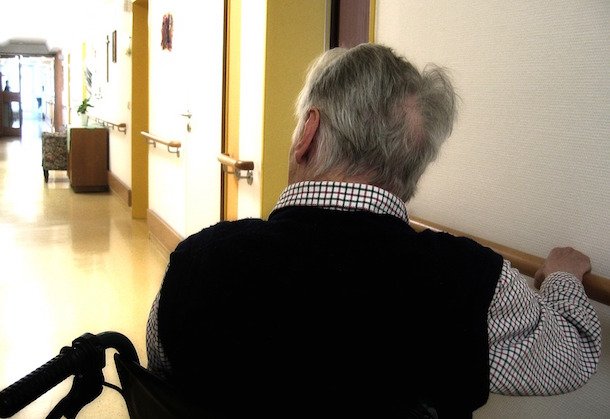What Is Hospice Care? A Guide for Caregivers

Many families turn to hospice care in the late stages of a life-ending illness. Unlike traditional treatment, hospice care doesn’t treat a disease outright but instead focuses on symptom management, comfort, and emotional support for a patient and their family.
One misconception about hospice care is that it means giving up. However, in my experience, I’ve witnessed how hospice care can maximize the quality of life in a person’s final days when traditional treatment for a life-ending disease has been ineffective.
Below, I’ll cover some basics of hospice care: how to know if it’s the right option for you, the types of care, the benefits, and the financial implications.
Pro Tip: Although hospice and palliative care are often used interchangeably, they’re very different forms of care. Read my guide, Palliative Care vs. Hospice, to learn more.
When Is It Time for Hospice?
The decision to transition to hospice care is difficult, and it will be entirely based on a patient’s specific circumstances. Hospice care is often recommended when a patient’s doctor has given them six months or fewer to live.
Because of the existential implications of hospice, many people delay seeking this form of care. The earlier you look into hospice, though, the sooner you can begin alleviating the pain and suffering from a condition that can only worsen.
Some indicators can help guide the decision to turn to hospice care:
- If a patient sees a rapid decline in health and is not responding to treatments.
- If hospital admissions and emergency-room visits become increasingly common.
- If your loved one sees progressive weight loss.
- If you notice changes in your loved one’s mental abilities.
Tip: Hospice care is not necessarily a final decision. If a cancer patient forgoes further treatment and enters hospice care and then their circumstances change, for example, there is no rule saying they can’t resume cancer treatment.
Turning to hospice care requires hard conversations among family members, patients, and physicians. The most important thing to remember is the ultimate goal: managing symptoms and raising the quality of life in a patient’s final months. Turning to hospice earlier — no matter how difficult the decision may be — can increase comfort and quality of life as a patient nears their passing. Hospice care can be a great source of dignity for terminal patients and a means of coping for them and their loved ones.
During my time working directly with older adults and their families, I noticed many people would postpone hospice care as long as possible. My opinion is that waiting too long is a disservice to the patient. People in the senior-care industry know how impactful hospice can be for both patients and their families.
The Types of Hospice Care
Hospice care isn’t one specific branch of health care; rather, it’s an interdisciplinary collection of physical, emotional, and spiritual services that work in tandem to treat terminal patients. There are four types of hospice care, and all of them focus on different stages of a patient’s needs.
In-Home Hospice
The first level of hospice care is in-home hospice, which means hospice staff — nurses, physicians, emotional-health experts, and spiritual guides — come to a patient’s home to provide care. This type of care is typically used in the early stages of hospice, helping patients transition from a hospital to their homes. In many cases, in-home care is used in conjunction with telemedicine to answer questions and medical staff members are dispatched based on a patient’s needs. In-home hospice can also include medical equipment brought to a patient’s home to provide the highest-quality care possible.
Continuous Care
The second level of hospice care is continuous care, which is in-home care with 24/7 support. With continuous care, a patient has a member of hospice staff on hand at all times to assist in symptom management, which may include persistent pain, trouble breathing, nausea, and vomiting that doesn’t subside. Caregivers frequently turn to continuous care when symptoms become more than they can handle and they require trained staff on hand 24/7 for expert assistance and guidance.
In-Patient Hospice
The third level of hospice care is in-patient hospice. It’s never a patient’s first choice to be away from the comfort of their home, but there are times when symptoms become too much to manage even with continuous in-home care. In-patient hospice allows a patient to be observed by nurses and physicians around the clock, who are ready at a moment’s notice to treat advanced symptoms and offer expert insights and care. In-patient hospice facilities tend to be calmer and more home-like than regular hospitals to replicate the comfort of a familiar setting.
FYI: Some adult care homes offer a progressive scale of care that eventually leads to in-patient hospice.
Respite Care
The fourth and final level of hospice care is respite care. Respite care exists as a hybrid of in-patient and in-home or continuous home care. The point of respite care is primarily to offer relief to caregivers. Especially for people with no medical background, becoming a primary caregiver to a hospice patient can be too physically taxing and emotionally draining. Respite care allows caregivers relief from the responsibility of having a hospice patient in their care for as many as five days and nights.
Pro Tip: To learn more about this type of care, read my guide: What Is Respite Care?
How Long Is Hospice Care?
Hospice care is an interdisciplinary field, and it can take many forms and durations depending on the unique needs of the patient. Broadly speaking, a caregiver (or the patient) works with a hospice team leader to develop a plan based on the services the hospice-care provider offers.
From there, a hospice team carries out the plan. Many people pass away shortly after hospice enrollment, but some patients may live even longer than six months. Hospice care is planned with that in mind. It’s about treating symptoms and raising the quality of life in a patient’s final months. This treatment of symptoms is known as palliative care.
There are several members of a hospice team, each with a different focus. Hospice-care teams may include physicians, specialists, nurses, clergy members, social workers, therapists, volunteer staff, and more. Each hospice-care team will be unique to the patient, but they all have a singular focus on comfort and quality of life.
Selecting the Right Hospice-Care Team
Choosing the right facility or team to provide hospice care can present some serious challenges. These professionals could be the people who care for your loved one in their final moments, so there are some questions to ask and considerations to make when choosing a hospice-care provider.
First and foremost is looking at the reputation and history of a practice or facility. If someone you trust has a recommendation for hospice care, then that’s a great place to start. A hospice-care provider with a decades-long track record of success also may provide peace of mind since you’ll know your loved one is in good hands. Since most conversations about hospice will originate with a physician, you may also want to ask for their personal recommendations.
You’ll want to understand the full range of services a hospice-care provider offers. Some things to look out for:
- Will they create an individualized plan for your loved one?
- Do they offer all four levels of hospice care?
- Will their staff train caregivers on how to use in-home care equipment?
- What hours do they offer in-home visits?
- Do they have 24/7 telemedicine support to answer questions?
- Are there additional services offered, such as massage or music therapy?
- Does their staff cater to specific populations, including language support?
It’s also essential to confirm certifications, licensing, and credentials for anyone caring for the patient. You’ll also want to verify that the patient will be covered by whatever health plan you intend to use for care.
FYI: Some hospice-care facilities don’t employ their own in-home care staff. When you’re determining the right hospice-care provider for your loved one, ensure that all staff — both internal and external — are reputable and certified.
Does Medicare Cover Hospice?
When you stack up the number of services provided through hospice care, it can seem prohibitively expensive. Everyone’s financial and insurance circumstances will be different, but there are a few common ways to pay for hospice care.
Both Medicare and Medicaid offer coverage to help pay for hospice care, and more than 90 percent of all hospice-care coverage is provided through one of those sources. The care provided under those programs can be surprisingly robust at relatively low costs. The Department of Veterans Affairs, via Tricare and private insurers, also offers hospice-care coverage.
Pro Tip: To learn more about hospice and Medicare, read my guide: Does Medicare Cover Hospice?
For people who don’t have insurance, some hospice-care providers work on a sliding scale or pro bono, offering specific services for free or with subsidized prices. Financial assistance can be allocated at certain facilities based on donations, grants, gifts, or other community resources. Services such as the Hospice Care Network in New York, for example, offer donation-backed nonprofit hospice care.
The Benefits of Hospice Care
Conversations surrounding hospice care are difficult to have, but they’re essential to understanding a physician’s or medical team’s perspective while also addressing both the patient’s and their caregivers’ comfort levels. Entering hospice care is a decision that can’t be taken lightly, but it can be the first stage in a family’s collective grieving process when discussed openly and honestly.
End-of-life care comes with a range of benefits because it works to heal the body and takes a holistic view of dying. On the physical side, hospice care focuses on comfort and quality of life, aiming to make a patient’s final months and days as dignified and fulfilling as possible. When done effectively, hospice care can help patients and their families confront death’s inevitability with grace and understanding. By beginning the acceptance process months before a person passes, family members can appreciate the time they have with their loved ones instead of focusing purely on the medical treatments and efficacy rates they could see for the patient.
The decision to admit a loved one into hospice care will be one of the hardest any of us make. The critical thing to remember is that it’s a decision that represents the first step in the healing process and a vehicle for our loved ones to live their final days in peace, dignity, and comfort.
Frequently Asked Questions About Hospice Care
-
Is hospice only for people who are dying?
Hospice care is primarily for patients who have a prognosis with a life expectancy of fewer than six months. That could be interpreted as “dying,” but some patients live beyond their hospice stay expectancy. “Hospice care” typically refers to care given to terminally ill patients though.
-
How long does a person live after entering hospice?
Hospice care is primarily for people with a life expectancy of six months or fewer, but some patients live longer than their expectancy and some recover enough to resume treatment for potentially life-ending diseases.
-
What is the difference between palliative care and hospice care?
Palliative care is the treatment of symptoms rather than the treatment of the disease itself. Palliative care is one aspect of hospice care, which is a broad collection of interdisciplinary medicine that includes other types of medical care in addition to psychological and spiritual counseling.
-
Can a person be in hospice for years?
Hospice care, as defined by the parameters of Medicare and Medicaid (the two largest insurers of hospice care), is meant to last for the final six months of a person’s life. A patient may be in hospice care for longer, but someone in hospice beyond six months typically will be released to other treatments — although they may return to hospice later.
-
How long does the average hospice patient live?
According to the Florida Department of Elder Affairs, the average hospice patient in 2018 lived 78 days, up from a 75-day average in 2017.





